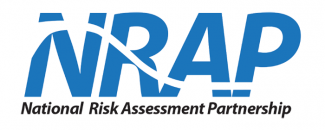Market demand for low-carbon energy is growing, and geologic carbon storage (GCS) is a technology that can enable continued and sustainable use of abundant fossil energy resources. Ensuring that GCS can safely and effectively store large volumes of anthropogenic CO2 away from the atmosphere for thousands of years requires a solid understanding of the subsurface and a thorough understanding of potential environmental risks and how those risks can be mitigated and avoided.
The U.S. Department of Energy’s National Risk Assessment Partnership (NRAP) is working to enable large-scale implementation of GCS technology by developing, demonstrating, and disseminating robust, transparent, and science-based tools and methods to quantitatively assess the range of potential environmental risks at CO2storage sites, as they evolve through time.
NETL leads the NRAP initiative, which draws from the expertise of four additional contributing national laboratories: Lawrence Berkeley National Laboratory, Lawrence Livermore National Laboratory, Los Alamos National Laboratory, and Pacific Northwest National Laboratory. Together, the NRAP team comprises international leaders in advancing the science and engineering of engineered geologic systems. Tools and methods developed by the NRAP team benefit from the input of a broad set of stakeholders from industry, state and federal regulatory bodies, academia, and insurance companies.
NRAP was initiated in 2011 with an objective to quantify environmental risks at GCS sites associated with potential unwanted fluid migration and potential induced seismicity, in the context of key geological and operational uncertainties. The task involved characterization and numerical simulation of critical GCS system features, events, and processes, including: geologic reservoir response to large-scale CO2 injection, leakage behavior of wells and sealing caprock, response of overlying receptors including groundwater aquifers and the atmosphere, and potential ground motion response.
This work has resulted in many significant accomplishments including the first quantitative risk profiles for a full GCS system, identification of key geologic storage reservoir risk relationships, and development of the NRAP Toolset, a set of ten tools for use in predicting geologic integrity and environmental risk performance at GCS sites.
The Toolset includes the flagship NRAP Integrated Assessment Model for Carbon Storage (NRAP IAM-CS)—a suite of tools that can be used to expedite selection and characterization of candidate storage sites, build confidence of public and industry stakeholders in predictions of storage site performance, and inform decisions related to large-scale implementation of GCS. In 2016, at the end of NRAP’s first phase of research, these tools were released for open distribution, testing, and application by the international GCS research, development, and deployment community (accessible at http://edx.netl.doe.gov/nrap).
Building on its success, NRAP has now entered a second phase of research. In NRAP Phase II, researchers will consider how potential GCS risks can be mitigated, and how uncertainties in site performance can be reduced using strategic monitoring. NRAP Phase II objectives include:
- Development of advanced predictive models of GCS system containment effectiveness/leakage response
- Development of a second-generation, open-source integrated assessment framework to quantify containment effectiveness/leakage response
- Development of improved tools and protocols to support advanced seismic hazard analysis and forecasting
- Development of tools to model monitoring and optimize design of monitoring networks for leak detection
- Testing and validation of NRAP tools and methods using field data sets.
These efforts will improve scientific and engineering knowledge, and NRAP’s validated scientific predictions will build stakeholder confidence that risks at CO2 storage sites are well understood and that decisions to implement this technology can be made with confidence. Through this approach, NRAP hopes to build confidence with industrial, investor, and public stakeholders.




